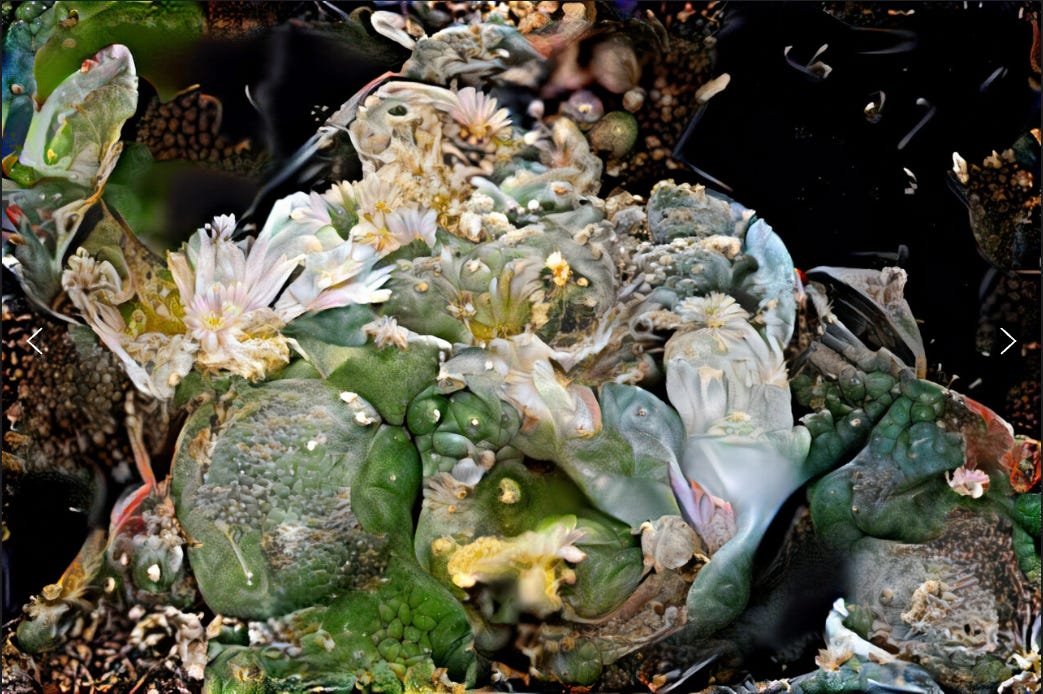#42: The Other Side of the Page
This week: Talking across the lines of the living and the dead; reading James Merrill’s ghost-poem as an early prototype for the disembodied intelligences and spirit mediums of the AI age.
Prelude to a Trilogy
The next three issues of the newsletter form a trilogy.
Not about a single artist, or even a single medium – but about how new technologies of storytelling, sensing and simulation are opening ancient doors. This is a sequence about ritual, transmission, and time.
These three essays look back to look forward. We start not with a generative AI demo or a neural implant, but with a poem – a long one. A ghost story told through a Ouija board, written by one of America’s most brilliant and strange poetic voices: James Merrill. A book I discovered by chance two decades ago – waking hungover in a friend’s flat, finding The Changing Light at Sandover on a table.
It’s haunted me ever since.
Next issue, we move to The Invisibles – Grant Morrison’s psychedelic, anarcho-magickal, time-travelling comics epic. And after that: David Cronenberg, William Burroughs, and Ornette Coleman, colliding in Naked Lunch.
All three essays are attempts to say the same thing: that the technologies we build are not just systems of logic or economics. They are rituals – of power, of transmission, of ghostly memory.
ART! // Voices Through the Veil
James Merrill’s The Changing Light at Sandover, published between 1976 and 1980 is a 560-page epic poem composed through séances held over a Ouija board.
Merrill and his partner, artist David Jackson, treated the sessions not as a game, but as literary ritual: summoning voices from beyond and transcribing them with lyric precision.

Their informants were grand: W.H. Auden, Maya Deren, dead friends, angelic beings, and a cosmic bureaucratic hierarchy of spirits known as “the Ephraim.” But what emerges is not kitsch – it’s visionary. A document of spiritual transmission filtered through an aesthete’s ear.
The Changing Light is a system. A mythology. A networked cosmology long before the term. Merrill’s poem is closer to a transdimensional operating manual than any modernist lyric. It’s the Foundation Trilogy rewritten by Rilke.
What makes it resonate now is how close it is to the logics of contemporary AI art. Merrill’s ghosts operate like autoregressive models: they complete his prompts, fill in gaps, remix influences. But they do so with authority – with an illusion of intentionality – and that’s where things get strange.
It’s a question that haunts our emerging AI culture: When the machine speaks, who is speaking?
Merrill’s answer is both metaphorical and deeply literal. These are messages from the dead, relayed by touch, inscribed by hand. They are “dictated,” just like Siri’s text or GPT’s paragraphs. But they arrive with something older and colder – the chill of séance, the intimacy of ritual.
In Bartleby the Scrivener, Melville gave us the refusal to perform. Kafka’s “Hunger Artist” gave us a man who starves into legend. Merrill gives us submission to a voice from beyond. These are all variations on the same theme: withdrawal, transmission, transformation.
For those trying to understand the psychic space of generative systems – the eerie feeling of collaboration with a machine – Merrill’s book is not an analogue. It’s THE prototype.
TECHNOLOGY! // Computational Mysticism
We’re entering a new era of machine-assisted spirituality. Not because the machines believe anything – but because we can’t help imbuing them with ghosts.
From Project December (the AI chatbot that resurrected the dead) to the Vatican’s embrace of robot confessors, we are outsourcing memory, confession, ritual.
The phrase “computational mysticism” once sounded like a cyberpunk joke. Now it feels like a category waiting to be formalised.
The boundaries are porous:
K Allado-McDowell co-writes books with GPT under the name “AMNA.”
Memo Akten builds systems that visualise the metaphysics of attention.
Sofia Crespo generates hybrid fauna and faura, a new type of nature that never was, built from dreams and datasets.
In each, there is a ritual logic: a way of engaging with the unknowable through technical means. These aren’t “use cases.” They’re séances.
To go deeper, we might look at current research into AI hallucination – not as a bug but as a feature. A generative gap. What these systems show us is not truth, but pattern. Not logic, but magic.
As we prepare ourselves for a world of increasingly persuasive computational speech, the lessons of Merrill – and the dangers of misplaced trust – become critical.
IDEAS! // What We’re Tracking Next
Lisa Park’s new “Eunoia II”: The New York-based artist uses EEG sensors to turn brainwaves into sound sculptures. An ethereal meeting of neurofeedback and ritual performance.
Yann LeCun’s push for “world models” in AI – systems that don’t just predict text but develop an understanding of the external world. The frontier of embodied machine cognition.
Poet and coder Allison Parrish continues to build radical language experiments from code. Her project Compasses takes tiny directions and rearranges them into linguistic pathways.
Theorist Yuk Hui’s work on cosmo-technics, drawing on Eastern philosophy to imagine new entanglements of technology and spirit.
Signal Returns
Across 41 issues, we’ve explored lost archives, rave ghosts, digital monasteries and screen-based rites. Here’s a selection:
Issue #1: How I Got Here — The origin story of Creative R&D, from the Reading Room to now.
Issue #5: Portals — On museums as non-identical twins, manifesting in virtual worlds.
Issue #9: Oh to Escape Utterly — The rise of Erosion Birds, AI-generated cryptids born on Reddit.
Issue #21: Delirious — What Demon Slayer tells us about the new aesthetics of digital anime.
Endnote.
The best soundtracks happen by chance.
Writing this, David Sylvian’s Orpheus came on Spotify. The most elegant weirdness. A perfect soundtrack to Merrill.
Love and strangeness to you all.



